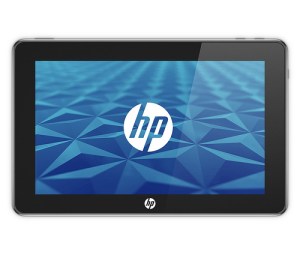
Hot on the heels of Hewlett-Packard announcing a deal to acquire Palm—and even fewer hours after Microsoft admitted its Courier project will never see the light of day—reports have Hewlett-Packard shutting down development of its “Slate,” the Windows 7-based tablet device intended to compete with the likes of the iPad, and which Microsoft CEO Steve Ballmer showed off as a central point of his CES keynote back in January. The Head of HP’s Personal Systems Group Todd Bradley pointedly dodged questions about the future of the Slate in a conference call about the acquisition, and a handful of reports from insider HP seem to indicate that the company has stopped development of the Slate in its tracks.
Lately, HP seems to have been focused on creating mocked-up video previews of what the Slate might be like if it ever shipped. In the meantime, industry scuttlebutt has had HP increasingly frustrated with leveraging Windows 7 onto the Atom-powered device, with the task of pushing a touch-oriented UI for all of Windows 7’s complex interface elements (designed for a keyboard and mouse) proving a daunting task. In the meantime, Apple is already a major market presence in the tablet arena with the iPad. HP had planned to being its Slate to market in mid 2010 for about $550, but few were expecting the company to meet that timeframe, putting HP’s “iPad killer” far behind Apple in the marketplace.
Other industry rumors have had HP working on Android-based portable tablet devices; however, with the company’s acquisition of Palm heavily based on the intellectual property of Palm’s webOS, many industry insiders are also expecting HP to step away from Android as part of its strategy to “double down” on webOS. That might mean a gaggle of webOS-based tablet devices coming from HP in the future—but not the immediate future.


